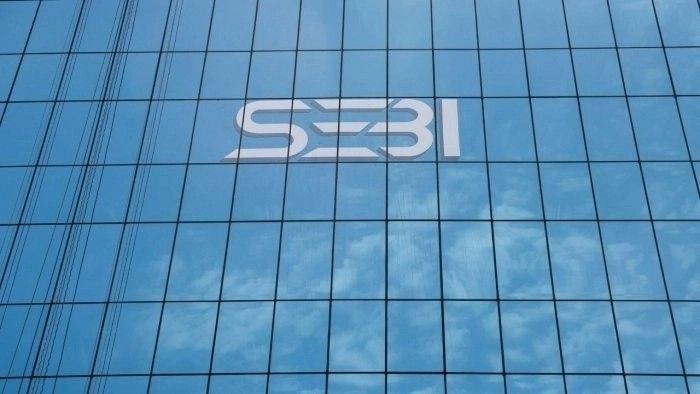- Courses
- GS Full Course 1 Year
- GS Full Course 2 Year
- GS Full Course 3 Year
- GS Full Course Till Selection
- Answer Alpha: Mains 2025 Mentorship
- MEP (Mains Enrichment Programme) Data, Facts
- Essay Target – 150+ Marks
- Online Program
- GS Recorded Course
- NCERT- First Ladder
- Polity
- Geography
- Economy
- Ancient, Medieval and Art & Culture AMAC
- Modern India, Post Independence & World History
- Environment
- Governance
- Science & Technology
- International Relations and Internal Security
- Disaster Management
- Ethics
- Current Affairs
- Indian Society and Social Issue
- CSAT
- 5 LAYERED ARJUNA Mentorship
- Public Administration Optional
- ABOUT US
- OUR TOPPERS
- TEST SERIES
- FREE STUDY MATERIAL
- VIDEOS
- CONTACT US
SEBI Launches “@valid” UPI IDs
SEBI Launches “@valid” UPI IDs

Why in the News?
- SEBI (Securities and Exchange Board of India) will launch a validated UPI handle “@valid” for all its investor-facing registered intermediaries starting October, 2025.
- The aim is to enhance investor protection, ensure secure digital payments, and combat fraudulent activities in the securities market.
- Existing UPI IDs used by intermediaries will be discontinued by December, 2026.
|
Securities and Exchange Board of India (SEBI):
Unified Payments Interface (UPI):
|
Key Highlights of the Initiative:
- The “@valid” UPI handle will:
- Be allocated only by NPCI (National Payments Corporation of India) and only for payment collection by SEBI-registered intermediaries.
- Display a green triangle with a thumbs-up symbol to indicate authenticity.
- Be mandatory for all SEBI-registered intermediaries (brokers, investment advisors, analysts, etc.) who collect payments from investors.
- The UPI ID format:
- It will be a unique ID with @valid combined with the name of a self-certified syndicate bank.
- Example: For a registered broker ABC.Ltd, who has an account with xyz bank, the exclusive UPI ID will be abc.brk@validXYZ.
- It will be a unique ID with @valid combined with the name of a self-certified syndicate bank.
- No change in existing SIPs (Systematic Investment Plans), but older UPI IDs will be phased out.
- Development of “SEBI Check”:
- It will provide an additional layer of security to the investors.
- The investors will be able to verify the authenticity of an entity before proceeding with any financial transaction.
- This can be done by either scanning a QR code or by entering the UPI ID manually.
- The investor will be able to confirm the bank details of the registered intermediary, like the bank account number or the Indian Financial System Code (IFSC).
|
National Payments Corporation of India (NPCI):
Self-certified Syndicate Bank:
Systematic Investment Plans (SIP):
|
Objectives and Benefits
- Investor Protection:
- Prevents fraud by verifying payment recipients.
- Ensures payments are made only to SEBI-registered entities.
- Payment Security:
- Makes UPI transactions in the financial sector more transparent and secure.
- Ease of Identification:
- Helps non-tech-savvy and regional language users easily identify valid payment handles.
- Increased Trust:
- Encourages wider use of digital payments in the securities market.
- Regulatory Context:
- Part of SEBI’s broader push for:
- Tech-enabled transparency.
- Strengthened market infrastructure.
- Combating the rise in digital frauds targeting retail investors.
- Part of SEBI’s broader push for:
Challenges and Way Forward:
|
Challenges |
Way Forward |
|
1. Low adoption by small intermediaries |
Provide technical support and a simplified onboarding process for all intermediaries. |
|
2. Lack of investor awareness about @valid handle |
Launch multilingual awareness campaigns via TV, print, apps, and financial influencers. |
|
3. Language and accessibility barriers |
Use symbols (like green triangle) and vernacular content to reach the non-English population. |
|
4. Risks during transition period (till Dec 2026) |
Strict deadlines, phased migration, and frequent reminders to investors and intermediaries. |
|
5. Over-reliance on NPCI for infrastructure |
Explore creating backup systems or cross-verification mechanisms in collaboration with SEBI. |
|
6. Possibility of fraud in dual-ID phase |
Implement real-time fraud tracking and flagging of non-validated UPI handles. |
|
Ensure IAS Mains Question: Q. Discuss the significance of SEBI’s “@valid” UPI handle initiative in strengthening investor protection and digital payment security in India’s financial markets. (150 words) |
|
Ensure IAS Prelims Question: Q. With reference to SEBI’s upcoming “@valid” UPI system, consider the following statements:
Which of the statements given above is/are correct?
Answer: c Explanation: Statement 1 is correct: SEBI has mandated that all registered intermediaries, including brokers and mutual funds, must use the “@valid” UPI handle for collecting payments from investors. Statement 2 is incorrect: The National Payments Corporation of India (NPCI) will issue these handles only to SEBI-registered intermediaries after verification. Statement 3 is correct: A valid payment will show a thumbs-up symbol within a green triangle to ensure awareness among the non-English speaking population. |




